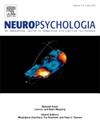A map of words: Retrieving the spatial layout of medium-scale geographical maps through distributional semantics
IF 2
3区 心理学
Q3 BEHAVIORAL SCIENCES
引用次数: 0
Abstract
Recent evidence has indicated that spatial representations, such as large-scale geographical maps, can be retrieved from natural language alone through cognitively plausible distributional-semantic models, which capture word meanings through contextual relationship (i.e., non-spatial associative-learning mechanisms) in large linguistic corpora. Here, we demonstrate that spatial information can be extracted from purely linguistic data even at the medium-scale level (e.g., landmarks within a city). Our results indeed show that different spatial representations (i.e., with information encoded either in terms of relative spatial distances or absolute locations defined by coordinate axes) of the underground maps of five European cities can be retrieved from natural language. Furthermore, by selectively focusing on the London tube, we show that linguistic data align effectively with both geographical and schematic visual maps. These findings contribute to a growing body of research that challenges the traditional view of cognitive maps as primarily relying on specialized spatial computations and highlight the importance of non-spatial associative-learning mechanisms within the linguistic environment in the setting of spatial representations.
基于分布语义的中比例尺地形图空间布局检索。
最近的证据表明,空间表征,如大规模的地理地图,可以通过认知上合理的分布语义模型从自然语言中检索出来,该模型通过上下文关系(即非空间联想学习机制)在大型语言语料库中捕获词义。在这里,我们证明了空间信息可以从纯粹的语言数据中提取,甚至在中等尺度水平(例如,城市内的地标)。我们的研究结果确实表明,从自然语言中可以检索到五个欧洲城市地下地图的不同空间表示(即,以相对空间距离或由坐标轴定义的绝对位置编码的信息)。此外,通过选择性地关注伦敦地铁,我们表明语言数据与地理和示意图视觉地图有效地对齐。这些发现促进了越来越多的研究,这些研究挑战了认知地图主要依赖于专门的空间计算的传统观点,并强调了在空间表征的语言环境中非空间联想学习机制的重要性。
本文章由计算机程序翻译,如有差异,请以英文原文为准。
求助全文
约1分钟内获得全文
求助全文
来源期刊

Neuropsychologia
医学-行为科学
CiteScore
5.10
自引率
3.80%
发文量
228
审稿时长
4 months
期刊介绍:
Neuropsychologia is an international interdisciplinary journal devoted to experimental and theoretical contributions that advance understanding of human cognition and behavior from a neuroscience perspective. The journal will consider for publication studies that link brain function with cognitive processes, including attention and awareness, action and motor control, executive functions and cognitive control, memory, language, and emotion and social cognition.
 求助内容:
求助内容: 应助结果提醒方式:
应助结果提醒方式:


